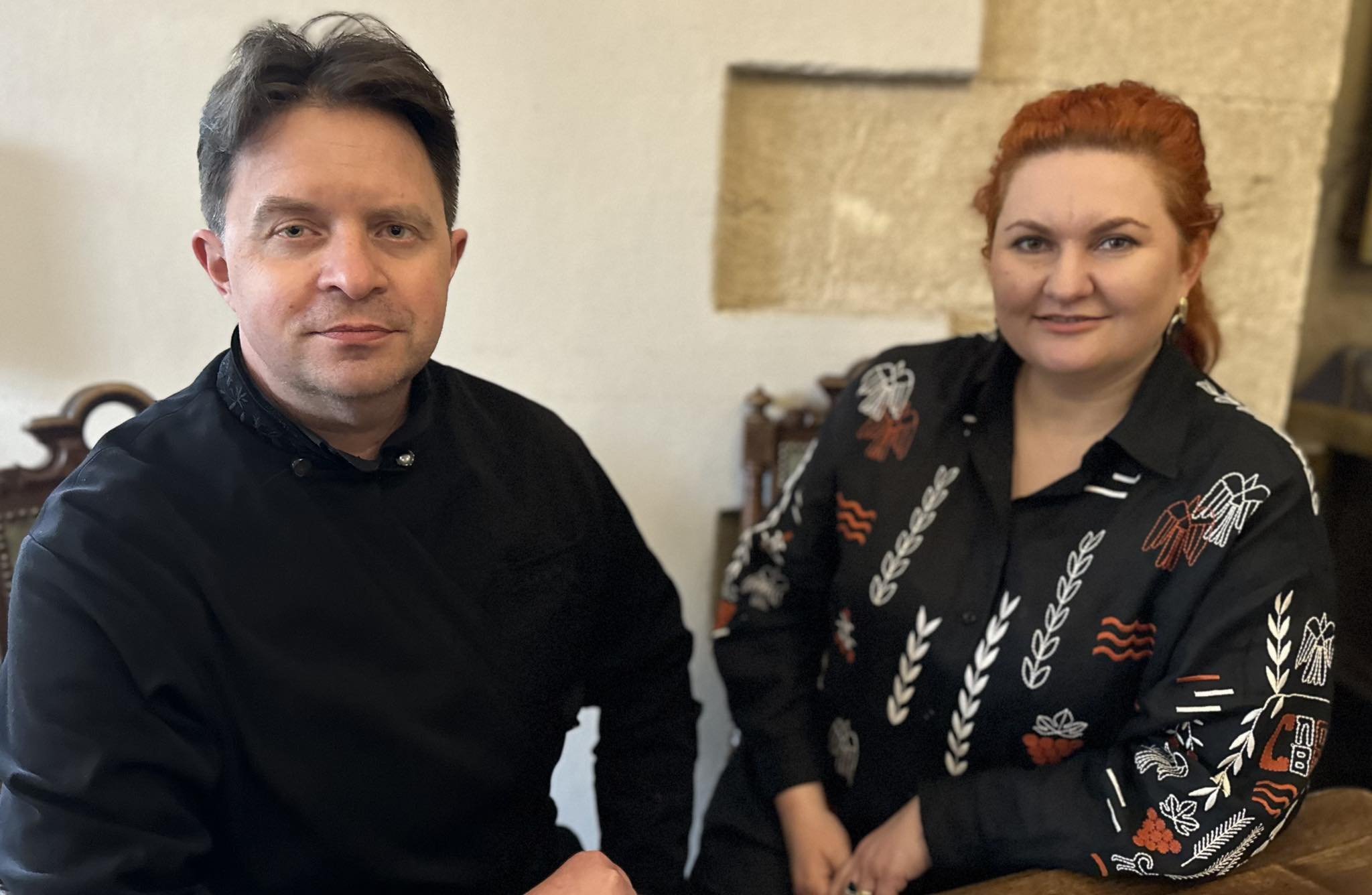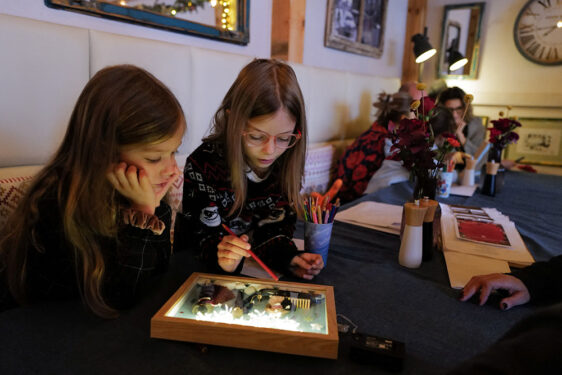
(OSV News) — The Ukrainian Catholic Cathedral of the Immaculate Conception of the Blessed Virgin Mary, known colloquially as the “Dominican Church,” is the best-known landmark in Ternopil in western Ukraine. Before World War II, it was a Dominican Catholic Church, closed by the communists in 1945 and handed over to Ukrainian Catholics in 1989.
For many Ukrainians pouring westward to flee conflict, the baroque 18th-century church with its distinct twin bell towers, standing tall above the old city’s red rooftops, proved a natural beacon for those propelled far from home.
“In the beginning (of the war), in February 2022, our cathedral, which is in the center of town, became the main humanitarian hub,” said Father Martin Chomiw, a Ukrainian Catholic priest at the Ternopil cathedral.
“Almost every Saturday, and then once every two weeks, we gave out food and supplies to up to 2,000 people,” he explained, adding that locals could not believe how many people were fleeing parts of eastern Ukraine.
“We were only talking about a small percent of the people displaced by the conflict, but still, people were surprised and not very happy at first,” said Father Chomiw of the community’s response to so many people arriving.
However, Father Chomiw said, with constant awareness-raising by the church and other groups, and as the true gravity of the war set in, attitudes changed quickly. People began to come to the church, asking, “What can we do, and what do you need?”
But for Father Chomiw, food and supplies were only half the problem. People’s misery and vulnerability were appalling. Mostly women were standing in line for food distribution — mothers, grandmothers, aunties — with children of any age.
“We began to realize we needed to organize other types of help, for all the invisible wounds people have,” said Father Chomiw. “The wounds aren’t from missiles, but they are there inside, unseen.”
In many ways, people wanted a place of belonging and to feel a part of something. The schoolchildren coming from eastern Ukraine weren’t initially easily accepted by the children in Ternopil, because they spoke “funny,” with thickly accented Ukrainian, sometimes mixing in Russian words. (In the east of the country, Ukrainians speak Russian).
Culturally and religiously, western Ukraine is very different from eastern Ukraine, and the children and adults experience culture shock when crossing the Dnipro River, which flows through the capital, Kyiv, and demarcates a border between east and west.
Father Chomiw and the parishioners set out to build a community — the new community that Ternopil would become to include all the new people uprooted by war.

That community now benefits from the Invisible Wounds of War project, which the International Catholic Migration Commission (ICMC) funds as part of a grant from a Catholic partner, GHR Foundation, based in the United States. ICMC is the lead agency coordinating help to some of the millions of refugees and internally displaced peoples, regardless of faith, race, ethnicity or nationality.
Art therapy is one of the project’s activities, so the parish opened its playground and created an open space where displaced kids can draw, paint, model with clay and do craftwork. The parish also arranges excursions outside of town, to the countryside, in addition to regular visits to cultural sites around the city, such as museums, a castle and monasteries. The trips include local children and children who have arrived from the east, so they can mingle and make new friends.
Father Chomiw’s wife, Maria (Ukrainian Catholic priests can marry), is a trained psychotherapist. She initiated one of the most important components of the project to help children deal with severe trauma, negative feelings and psychological stress.
The couple contacted the makers of the “Hibuki dog,” or “Huggy dog” in Hebrew, which was developed by Israeli psychologists to assist children who were displaced or living in situations with the constant threat of conflict.
Maria took online training to become accredited and now helps families in Ternopil to “adopt” a Hibuki dog. Each dog is assigned to a specific child, and Maria teaches parents how to use them. More than 30 families have received a therapy dog so far.
“We have to underline to the parents that the stuffed dog is not a toy — it is therapy. And we teach them how they should be using the dog, and how the child should be using it,” Father Chomiw explained.
If there is an air raid siren and everyone has to go to a basement or a bunker for safety, which occurs two or three times per week, the children are encouraged to comfort their Hibuki dogs. This allows for “transference-focused” therapy; by comforting the stuffed animal, the child expresses his or her own thoughts, fears and stresses. By playing an active role in soothing the dogs, they are, in fact, self-soothing. They transfer all those feelings onto the dog, helping them to relieve some of that stress and anxiety.
Many of the children are alone, Father Chomiw said, with no friends, or maybe just one friend. “This friend is always close. This friend gives hugs. This friend is intimate. So, the child opens up and talks to the dog.”
Despite yearning for home, people continue to arrive in Ternopil. Some move on to other countries in Europe, while some, such as those from Kyiv, have been able to return home. For most, however, a return home isn’t currently part of the equation, but in Ternopil, they have found their place of belonging in the meantime.
